|
Middle schoolers have a unique outlook on the world. They are not quite adolescents, yet could not be mistaken for elementary kids either. Capturing their interest and truly engaging them in the learning process can be tricky at best. Sometimes, it seems near impossible. For example, a unique challenge of teaching in the desert of Southern California, is that whenever the weather changes - students inevitably go a little bit crazy. In the land of constant sunshine, a cloudy day, strong winds, or - most shockingly of all - some actual raindrops can bring instruction to a grinding halt. So, when it came time to teach poetry this year and we happened to be smack in the middle of a cloudy and rainy couple of days - I knew I needed to deliver an unforgettable exploration of poetry. Since songs are poetry set to music, I decided to tap into one of my favorites: Starting off by reading In the Ghetto was a good decision. About 80% of the students at my school site come from socio-economically disadvantaged families, and I seem to have a higher than average amount of students this year who are bussed in from a neighborhood known for its gang affiliations. The content of In the Ghetto surprised them - they are used to hearing Elvis' more lighthearted classics play over the loudspeaker at the local water park during the hot summer months. But they were entirely unfamiliar with this song, which quickly and understandably struck a chord. We read the lyrics using the Four Voices strategy. This consists of breaking text into meaningful chunks and color-coding it in four different colors. Each student in a group assumes a color to read and this aids in their overall comprehension of the poetry text. Afterward, I used In the Ghetto as a model text. On clean copies of the poem, we worked as a class to paraphrase each stanza and color-code literary devices. Discussions about tone and mood evolved naturally during the paraphrasing process, and I was delighted to see that engagement was through the roof thanks to the use of Today's Meet. When all was said and done, I played the song so students could hear it. They loved it! To repeat the process, while gradually releasing control until students could execute the read/paraphrase/analyze process on their own, I busted out some other major players in poetry and music. Whenever possible, I shared the songs or You Tube fan tributes in class after reading. (For example, there's a fantastic fan tribute for Annabel Lee on You Tube, which really helped cement understanding for my EL students.) 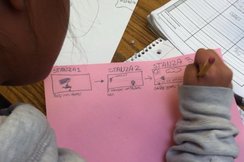 After our poetry exploration, which included a day of poetry-themed learning centers, I asked students to attempt to write their own poems individually. In groups, students selected their favorites and planned iMovies to illustrate their poems. Since students have previously engaged in digital storytelling, the storyboarding process was very successful at keeping groups on track and focused. The poems were read as voice-overs and some groups chose to add music, while others preferred to deliver their poems slam style. Here are a few of their finished poetry movies: So, what do you get when you combine Elvis, Poe, CCR, Seuss, Simon & Garfunkle, and Frost? Magic for sixth graders learning about poetry!
2 Comments
There is a feeling I get when a lesson is going well - you know the one, because you've felt it, too. It's similar to the way my stomach drops whenever I hear the opening strains of "Phantom of the Opera," or that moment just before I hurtle over the edge of the waterfall on Splash Mountain at Disneyland. What is that feeling? Excitement. Enthusiastic anticipation of a good thing. An excellent experience in the making. The act of teaching is the art of bringing many components together and orchestrating them into a meaningful whole: the student, engagement strategies, pedagogy, relevance, and authentic experiences. Teaching is like conducting; it's knowing when to let a single instrument play and when to let the whole symphony soar. Maybe that's how some teachers know when it's time to make a change - when the song becomes just another song and the notes are no longer special. There are so many moving parts to a good lesson, it can be difficult to harmonize them all. As teachers, we have to foster in ourselves a keen sense of timing and what it means to facilitate, as opposed to direct. While effective direct instruction is not a bad thing, the lessons that I (and my students) enjoy the most are those which allow autonomy and encourage investigation. No matter what we do, technology is almost always a main component. At my school site, I am responsible for training others about Common Core State Standards as California transitions to the CCSS over the next several years. I've begun piloting Common Core ELA lessons in my classroom and last week I decided to test drive a Common Core lesson plan that I wrote for Social Studies. In the end, the week long lesson proved to be a veritable symphony of project-based learning, iTunes U, and collaboration. The standards I decided to address were a blend of my content area standards and the CCSS Literacy Standards for Social Studies, History, Science, and Technical Subjects. Here's a breakdown: Social Studies Standard 6.5.4: Outline the social structure of the caste system. Inquiry based learning lends itself very well to Common Core, so I decided to take a PBL approach to this lesson. To provide structure, iTunes U seemed perfect. It only took me several hours to construct a course on Ancient India's Caste System. (Go ahead - subscribe to it!) The most difficult part was compiling a list of resources for students to use during the inquiry process. Here's a screen cap of the materials in the course (click to enlarge): Because my students are piloting a student-centered BYOD program, I asked them to download the free iTunes Uapp ahead of time. In class, I showed them how to search for my course in the catalog and subscribe to access content. Since students are already used to working in collaborative groups, I was able to quickly walk them through the interface of the iTunes U course I made and then set them free. Students did an incredible job utilizing the course to help walk them through the PBL process: developing an inquiry plan, creating a reasonable schedule, conducting research, compiling notes, and creating a product to demonstrate their learning. The duration of the project was an hour per day for five consecutive days, and the essential question under investigation was, "How was ancient Indian society organized and how does it compare to our society here in the United States?" Check out this video clip of my students. This is around the time that I started getting that insanely wonderful feeling of a successful lesson in progress: During the final stage of the lesson, kids were able to choose how they wanted to showcase their learning. I gave them several app suggestions, but students were free to use other apps if they felt they could accomplish the task given (click to enlarge): And these are a few of the fantastic products that students were able to create: ecause having an authentic audience is important, student projects were uploaded to our classroom website and shared via QR Codes in our school's main hallway, as well as on a bulletin board in our classroom. At the end of the week, my students felt proud of themselves, the choices they made, and the work they accomplished.
There's a feeling I get, when a lesson went well - you know the one, because you've felt it, too. Success. If you have questions about the process I used or any aspect of this post, please feel free to leave a comment. One of the reasons I love teaching 6th grade at a middle school is that I get to watch my students slowly develop all sorts of awesome qualities over the course of a year, including wittiness and a dawning understanding of repartee. In September, they’re so overwhelmed by the middle school learning curve, they don’t quite register all of my lovingly sarcastic quips, but after the holidays, it’s the long haul toward becoming a teenager – and something never fails to unlock the Sarcasm-Center of their brain. That’s when learning gets really fun, because there always seems to be plenty of laughter to accent the “a-ha!” moments. So, today, when one of my girls said, “Hey, Mrs. Pack. Are you sure this is ELA, or did you just decide we could take some time off?” I almost burst out laughing, thinking she was being sarcastic. However, when I realized that this twelve year old was entirely serious, as evidenced by her truly bewildered expression, I decided to lay my best possible answer on her: “Well. Learning is supposed to be fun, right? This must be ELA, then.” What was her reply? A hug. You might be wondering what the heck we did in Language Arts this week that would elicit such a grateful response… Answer: We made movies.  My students have been reading a fantastic book of short stories by Gary Soto called, “Petty Crimes.” The short stories all take place in the same neighborhood, but feature different characters. Since most of my students are Hispanic, they love Gary Soto’s writing and they especially love his characters, which include wannabe cholos, fierce cholas, endearing abuelitos, and menacing tias. When I noticed one of my classes was having trouble isolating the main events of each story, tending to focus as much on details as major plot shifts, I decided to have the kids retell their favorite chapter of “Petty Crimes” using iMovie trailers on a couple of iPads. First, I divided students into groups by drawing names out of a hat and had each group choose their favorite short story. Then, everyone worked together to choose the most appropriate trailer template for their project; this led to a very cool, totally organic discussion about how the preset iMovie music and graphics in the trailers communicate a certain mood and tone. Students were very successful in making appropriate choices, all of which resulted from fantastic group conversations. Since digital storytelling is still a fairly new concept for this class, I delivered a quick lesson on film angles. Next, everyone worked together to retell their story in words and planned the action they needed to film to fill in all of the video clip spots in the trailer storyboard. The fact that the trailers have limited space for words and images increased the need to retell stories effectively, choose wording carefully, and search for powerful synonyms. iMovie for iPad was a breeze for students to learn, and the biggest challenge was helping students remember to film with their iPad in landscape. Over the course of the week, we spent about 15-20 minutes per day working on our trailers. Students brought in an insane amount of costumes and utilized my prop box to help them tell their stories more realistically; even in 6th grade, kids love to dress up. In the end, not every movie was perfectly filmed, but all of the students managed to successfully retell the major events of each story – and they had an absolute blast! To finish out this blog post, I thought I’d share a few student products: Comments? Questions? Feel free to leave a comment or email me at [email protected].Download my iBook: Digital Storytelling: Connecting Standards to Movie-Making
Take my iTunes U course: Digital Storytelling: Film Challenges On this past Monday, one of my former students stopped by my classroom. I always love to reconnect with students who have moved on to 7th and 8th grade, and I love hearing how their lives are changing, what they’re up to, and how their families are doing. Occasionally, I’ll run into students who have graduated from high school and I’ll see them behind the counter at Starbucks. It can be a little strange to see kids who are so much older than the last time I saw them, but somehow I’ve always been able to remember their names – it’s a weird talent. Anyway, this one kid, who’s now taller than I am, popped his head into my classroom after school last Monday and said, “Yo, Mrs. Pack. You still using iPads like a rockstar? I got a question.” For those who may not know, Urban Dictionary defines the phrase “like a rockstar” as an adjective that means, “to do something well – be it musical or not. Example: She can knit like a rockstar.” The thing is, I’ve always wanted to be a rockstar but have no musical talent whatsoever, so it’s sort of a relief to know that I can be rockstar-like while doing other things that I am actually good at. There are a ton of video tutorials on YouTube that attempt to teach people to do a number of tasks like a rockstar. For example, check out this tutorial that teaches you how to pack a suitcase like a rockstar: I think one of the ways you know you can use iPads and other iOS devices like a rockstar is when you begin to author your own content. Thanks to the advent of iBooks Author, writing my own book feels like delivering a soaring guitar solo to a sold-out stadium. Publishing a course on iTunes U and using my book as a multimedia source feels like jamming next to Springsteen, Steven Tyler, and Mick Jagger. In light of that, here are a few tips on how to author content like a rockstar:
Download my book, Digital Storytelling: Connecting Standards to Movie-Making Subscribe to my iTunes U Course, Digital Storytelling: Film Challenges Being able to share what you do in your classroom and what you’re passionate about teaching kids is an amazing opportunity. Disseminating ideas has never been so easy. Between social networking and the incredible publishing tools of iBooks Author and iTunes U, teaching in isolation isn’t really a danger for a tech saavy teacher. If you haven’t yet started publishing your own content – what are you waiting for?! Download iBooks Author on your Macbook, sign up for an iTunes U instructor account (or check with your district to see if they have an account you can be affiliated with), and start authoring like a rockstar. You can do it! Questions? Want to know how it’s done? Comment on this post or email [email protected]. By Jessica Pack
Follow Me on Twitter @Packwoman208  When I was a kid, I wanted to be just like Bill and Ted…you know, those guys who had a totally gnarly, totally Excellent Adventure? Here’s a video clip to refresh your memory: Aside from rockin’ the grunge clothing and playing a mean air guitar, the coolest thing about Bill and Ted was their time traveling phone booth – which, you have to admit, is a pretty neat concept. Every time I browse one of thoseAs Seen on TV stores, I keep hoping it’ll pop up. Until it does, however, there is another way more excellent option to transport you and your students to another place: Tourwrist for iPad. If you haven’t played around with this app, you’re missing out. Furthermore, if your students haven’t played around with this app, then they’re missing out. The function of the app is just what the name implies – taking tours of far-off places with a flick of your wrist. There are some fairly well put together web-based virtual tours out there, but the quality of the 360 degree tours on Tourwrist take the concept of virtual exploration to a whole new level. Opening a tour in this app is the closest thing to actually being there. Dude. Does This Thing Come with an Instruction Manual? Today I had my students use Tourwrist to explore the pyramids, the Great Sphinx, and an ancient cemetery in Egypt. How was this possible? See below for a video tutorial… Dude. Why Does This App Rock?As a result of using this app in class, students were ridiculously engaged, highly motivated to complete the assignment, and eagerly participated in some really fantastic academic conversation. Their assignment was accomplished in several parts. First, students watched a video clip about Egyptian religion on their iPads, then explored the Tourwrist app. They used Safari to search for credible sources of information about Egyptian religion and created a Circle Map to share their discoveries. By far, students were most excited about using Tourwrist and were able to draw a lot of really great conclusions based on what they saw. Here are a few quotes from student work:
As a teacher, it was incredibly fun to watch my students engage in learning with excitement and a genuine sense of curiosity. Once a few of the students had finished the assignment, they asked to go back into the app to explore other places in Egypt. They were able to tour some Egyptian homes, the inside of an Egyptian classroom, and other famous historical landmarks. I could tell my kids were excited by the quality of the conversations they continued to have; students were drawn to similarities they saw between themselves and modern Egpytian households, and loved sharing connections they made with each other. Here are a few of their reactions that I captured with my iPhone: Dude! How 'Bout Some Integration Ideas? Tourwrist could be easily integrated into almost any content area with any grade level, because it's just so darn engaging and fun to use. Consider trying out one of the following ideas in your classroom:
Well, it’s definitely not Bill and Ted’s phone booth, but it is remarkable. Tourwrist: An app every teacher should use. Have you used Tourwrist in your classroom? Are you inspired to use Tourwrist after reading? We’d love to hear from you, so share your thoughts by commenting. Happy travels! One of the most persistent reasons that I hear for why some teachers choose NOT to implement mobile technology is that whatever task they are asking students to do can be done using more traditional methods. As one colleague casually mentioned to me recently, “The iPad isn’t offering anything that I can’t have my students do using a pencil and paper.” 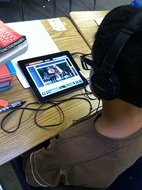 While my immediate impulse was to counter this comment with a dozen different arguments for why mobile technology is an incredible classroom tool, I realized that I wasn’t talking to someone who is living in the teaching dark ages. More often than not, the teachers who have made such remarks to me are actually pretty adept at using technology for instructional purposes in their classroom. They are often dynamic, engaging individuals with a charisma that students find irresistible. For all intents and purposes, these teachers are on the top of their game. The fact that their technology integration is teacher-centered seems to be something they simply aren’t all that concerned about. I think, underlying it all, is an adherence to the age-old philosophy that says, “If it ain’t broke, don’t fix it.” On the surface, it’s tough to argue that these teachers should change the way they teach. They are already making an impact, engaging students, and imparting knowledge. These teachers are good at their jobs – probably excellent. However, the real issue isn’t whether teachers are successful at teaching, but rather if their students will be successful at whatever it is they want to do in life. When we integrate technology in the classroom and keep it student-centered, there are some powerful byproducts of learning that can’t be overlooked: 1. Information and Media Literacy. As the nation shifts toward Common Core standards, the instruction students receive will shift more toward building information literacy. With a plethora of sources available to them on the Internet, students need to be able to search effectively, discern credibility, and synthesize information. This is a “life skill” that can only be developed in students who are exposed to and interact with multiple sources in an Internet-based, media rich environment. Students need to be able to communicate in a variety of ways because our world grows more and more digitized each year. Can they express their point of view in a multimedia presentation? On film? In a podcast? By writing a persuasive blog post? Can they conduct a survey online, or collaborate with peers using cloud-based software? 2. Critical Thinking and Innovation. If we are supposed to train students to think deeply, ask the hard questions, explore to find solutions, and evaluate the opinions of others, then how can we do that if we only ever give our students the opportunity to think inside of a box that we build? 3. Engagement and Experience. Even if 90% of your classroom is engaged 90% of the time, there is an opportunity for improvement. Boost engagement to 100% and give students the option to learn, grow, discover, and create in the medium most natural to them – technology. We are teaching digital natives and we need to meet them on their own turf. Yes, technology will continue to change and grow, and in a few years we will probably have something even better than the iPad, but should we stop adapting our instruction in anticipation of the next big device? Should we stop investing money in educational technology to put in the hands of students because it will eventually become outdated? Of course not. Relevant experience builds on itself. During the last school year some of my students had never used an iPad before, but they had used a friend’s iPhone or iPod, so it wasn’t a big leap for them to make to use an iPad. Those leaps won’t be possible if we never invest in anything. In the end, the instructional decisions we make as teachers need to be based on what kind of people we are shaping students to become, not on whether the way we teach still works. Cross-posted on www.appsinclass.com
|
Author: Jessica PackCalifornia Teacher of the Year. CUE Outstanding Educator 2015. DIGICOM Learning Teacher Consultant. 6th Grade Teacher. Passionate about gamification, Minecraft, digital story-telling, and fostering student voices. Download:Archives
June 2020
Categories
All
|
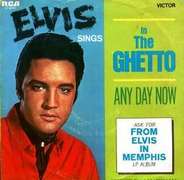
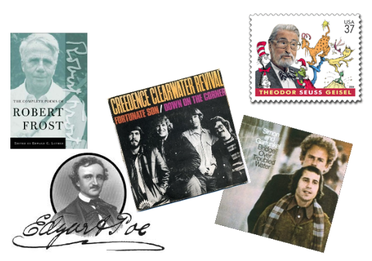
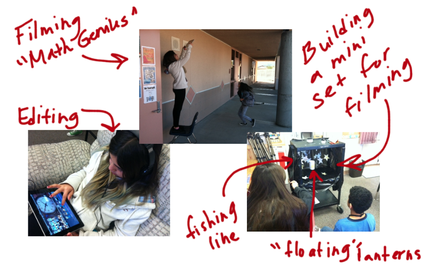
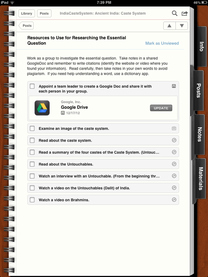
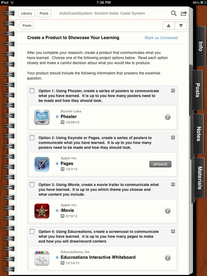
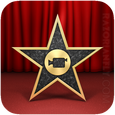
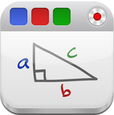
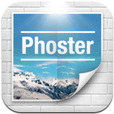

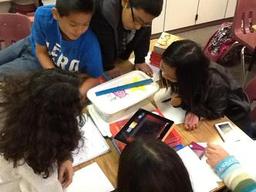
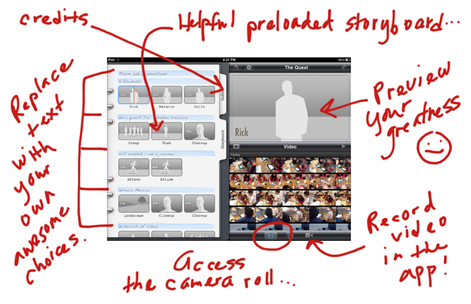
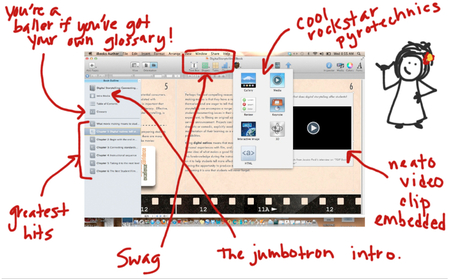

 RSS Feed
RSS Feed